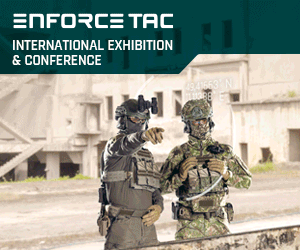University of Victoria researchers in Australia have developed an innovative new additive that shows promise of dramatically improving body armor. This development is the result of a three-year research project funded the government’s Department of National Defense. The goal is to make ballistic-resistant body armor that is flexible and breathable and far more comfortable to wear than other protective vests.
This new body armor material is called Comfort-Optimized Materials for Operational Resilience, Thermal-Transport & Survivability (COMFORTS). Eleven UVic researchers are working on this along with Canadian researchers from the University of Alberta and the University of British Columbia Okanagan.
Jeremy Wulff, a synthetic chemist with the UVic research team, recently described their contributions to the project.
“People tend to dress in layers in an effort to protect themselves in extreme weather,” he said. “The idea of dressing in layers is the basis for the new protective wear we are currently developing. The design includes a base, middle and outer layer. My focus is on the middle layer and the development of a much lighter weight, ballistic-resistant material.”
Wulff’s research team has successfully developed a new category of additives that can make existing body armor materials stronger and more durable.
“With the new additives we’ve developed we can molecularly bond the polymers together that make up the fabric,” said Wulff. “We call this process “polymer cross-linking” and this increases the fabric’s strength so that it is more impact-resistant.”
Although the UVic researchers have been the ones making the breakthrough in the strengthening additives for existing materials, COMFORTS research is being shared with researchers from all three universities. University of British Columbia’s Survive & Thrive Applied Research (STAR) Impact Research Facility (SIRF), for example, enables experiments to be performed that UVic researchers could not conduct on their own.
“The kind of materials-testing resources at the STAR Impact Research Facility gives us the opportunity to conduct a lot of critical experiments that we could never do in our UVic lab,” said Wulff.
“By putting out revolutionary polymer cross-linking technology together with STAR’s mechanical engineering expertise, we can start working on some incredible projects that would be impossible for us to do on our own.”
Besides developing improvements in body armor, the COMFORTS project research can possibly be applied to the equipment used by first responders and athletes.
Materials could potentially be developed to protect against corrosive chemicals, fire, and below-freezing temperatures.











